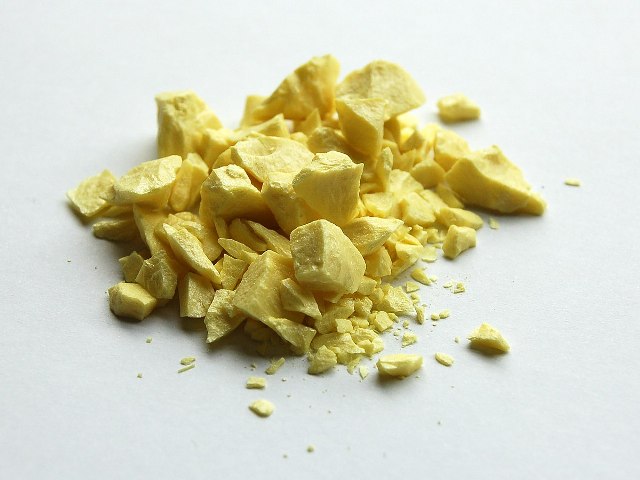A question of sulphur

A question of Sulphur……
Something which we hear from customers fairly often is “I’m allergic to sulphites, I always get a headache after drinking a bottle of 14.5% red wine.” or “It brings me out in rash instantly, it’s the sulphur…” or “I snogged the boss last night, it was the sulphur in the 2 bottles of Champers that clouded my judgement”….ok maybe not that last one….
This begs a few questions; why, when & how does Sulphur get in to wine, how much is in it compared to other things we eat & drink & what bit do we have a reaction to (1 in 100 people are affected with asthmatics in particular sensitive to it). There is, however, no evidence to suggest that sulphur contributes to hangovers!!
So how does it get in?
Most importantly, it must be stressed that sulphites (a catch-all term for every form of Sulphur) naturally occur in wine as a by-product of fermentation, so ALL wines (and most living things including you and me) contain them. EU rules merely state that any wine (or any foodstuff) must have “contains sulphites” on the label if it has over 10 mg/l, which is way less than naturally occur in most wine, so that in itself is not that helpful to us drinkers.
The bit we’re mostly talking about is when wine makers add SO2 at various points, to control wild yeast, as a disinfectant & antioxidant, and as a preservative and stabiliser. This may have been going on since Roman times so it’s not a new thing! It makes life a lot easier and helps ensure that the bottle reaches us fruity & fresh.
If it’s not added, and there are a few, generally small, artisan, so-called “natural” winemakers who are evangelical about this, wine can be funky, cloudy, stinky, oxidising more quickly, have a mousiness and generally be a bit “niche”.
This can happen if the wineries practice poor hygiene, or the fruit has certain bacteria present. Some love this funky style but also claim that when it all works and the wine is clean, natural, low-intervention methods make a liquid that feels more alive, fresher, with interesting, complex flavours than dumb, safe, sulphured commercial styles.
How much is in wine?
Levels of sulphur vary widely; within the EU, max levels are 150 mg/l in dry reds, 200 mg/l in dry whites and rosés, 235 mg/l in sparkling wines, and 250 mg/l in sweet white and rosé wines.
Interestingly, maximum levels are much higher outside Europe, eg 350 mg/l in the USA.
Maximums are lower for organic wines: 100 mg/l for dry reds, 150 mg/l for whites and rosés, and 220 mg/l for most sweet wines.
‘Natural’ wines have no legal classification but the rule of thumb, as defined by Isabelle Legeron MW (www.rawwine.com and commonly accepted by the trade), the max is 70 mg/l but most in practice have between 10 & 60.
Compare these levels with other foodstuffs and we’ll see these levels are actually pretty low; Dried fruit can have anything between 500 & 2000 mg/l!! I found an actual UK government list which is pretty interesting reading (on a slow day!) so to pick some at random, the max in fruit including juice, pulp and puree & including tomatoes is 350 (btw the Lidl shelf checkout thinks tomatoes are vegetables- grrrr!!), hamburgers, sausages or similar 450, prunes 2000. Most levels seem to be in the 50-200 bracket. Interestingly, beer is only 70. Soft drinks (not fruit juice) are 70 too.
Back to wine, the bit that seems to cause the problem is free sulphur, so if a wine has 85 mg/l, it may have 65 ‘bound sulphur’ (attached to other compounds) and 20 free, ie unbound and able to act as a preservative & antioxidant. It may be useful to have this information on the label perhaps….it’s always worth asking your friendly independent wine merchant to find out for you.
In summary, if you think you’re allergic, go for an organic red, avoid sausages and don’t even think about that prune & fruit juice casserole you were planning…
